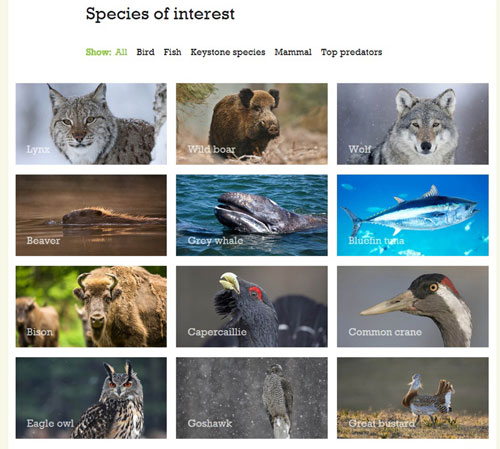SCOTLAND should have an entire wildlife park of animals reintroduced – including pelicans, sturgeon, moose and bison – according to a charity.
Rewilding Britain, a new charity, will champion the drive to help return Scotland’s Highland and lowland wildernesses back to their natural state.
Beavers have already been reintroduced and there have been widespread calls to bring back the lynx and wolf.

But Rewilding Britain have come up with a menagerie of 20 species, all extinct in Scotland for centuries, they should be brought back.
On the list is the dalmatian pelican, which can weigh up to 15kg, and the giant sturgeon, which can grow as long as a minibus.
The dalmatian pelican was last spotted in the Middle Ages.
Sturgeon disappeared in the 19th century, due to being heavily exploited for their caviar and their flesh.
The bison was last seen between 15,000 and 25,000 years ago, and it has been over 4,000 years since a moose was on the island.
Reintroducing moose and bison will have to be carefully assessed, as they may pose a particular hazard to traffic.
The charity also wants to boost the recovery of several species that have been reintroduced.
Wild boar, having died out in 1260, were reintroduced in the Lochaber area in 2009 as a way of cutting back bracken and helping the growth of native trees. Gamekeepers have since complained that the animals kill lambs and destroy crops.
Other species that should be boosted include capercaillie, beavers, cranes, eagle owls, goshawks, great bustards, ospreys, spoonbills, sea eagles, and wild cats.
Under the plan, hills will be reforested, rivers cleaned and lost species repopulated in the bid, which charities hope will see one million hectares of Scottish land returned to their natural state within a century.
Concern
Farmers, however, are concerned about some animals on the campaign list.
The National Farming Union (NFU) has shown strong opposition to wolves, which pose no serious danger to humans but have, in other countries, attacked sheep.
Andrew McCornick, NFU’s Scottish vice president, said: “Farmers are justifiably concerned at what the introduction of predators could mean for their livestock, particularly the many thousands of sheep kept on Scotland’s hills and uplands.”
Meanwhile, some landowners want wolves reintroduced to help manage deer populations – the predator’s prefer the taste of venison to lamb.
Rebecca Wrigley, programme manager for Rewilding Britain, said: “We hope we can gather a groundswell of support.
“Rewilding is really for everyone who cares about our future. Our ecosystems need us.”
The concept behind rewilding was inspired by environmentalist George Monbiot.
He said: “The changes we are calling for would be considered unexceptional almost anywhere else in Europe, where in many countries populations of beavers, boar, lynx and wolves are already recovering rapidly.
Relationship
“So far the public appetite for change here has had few outlets.
“We want to change that, and to restore the living world and our relationship with it.”
Andrew Bachell, SNH’s Director of Policy & Advice, said: “We‘ve already had a number of highly successful national reintroductions in Scotland, including sea eagles and red kites, as well as more local reintroductions such as the scarce woolly willow.
“The Scottish Government is also currently considering the possibility of reintroducing Eurasian beaver.
“We have no plans to reintroduce any more animals to Scotland at this time. If any third party wants to pursue a reintroduction, they would have to go through the various steps required.
“If we received an application to reintroduce a species, we’d look for the applicant to provide information on how the project would address ecological issues such as habitat availability, as well as the views of the public, livestock and land managers, the wider UK perspective, and any socio-economic impacts.
“The views of the Scottish Government would need to be taken into consideration.”